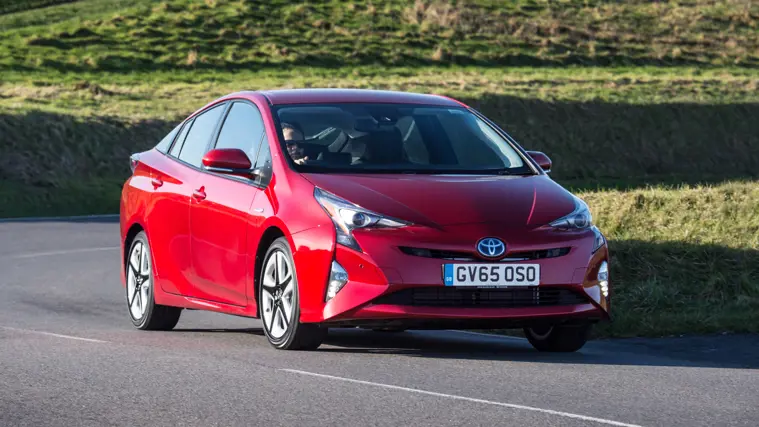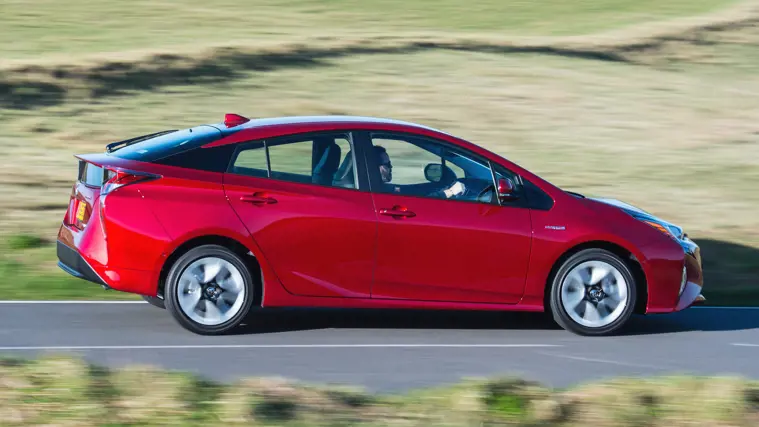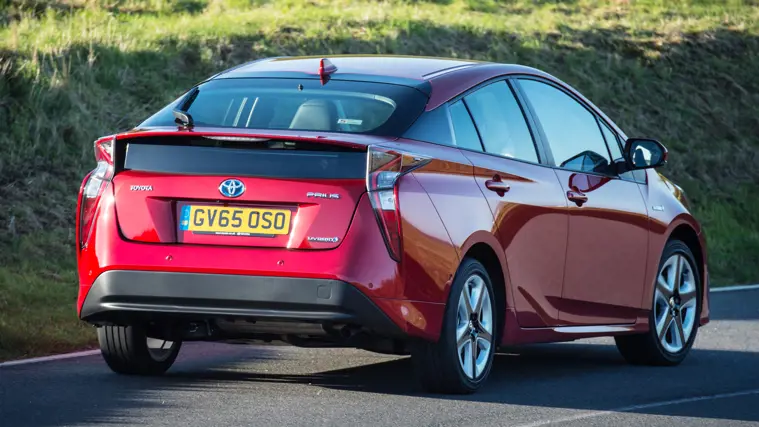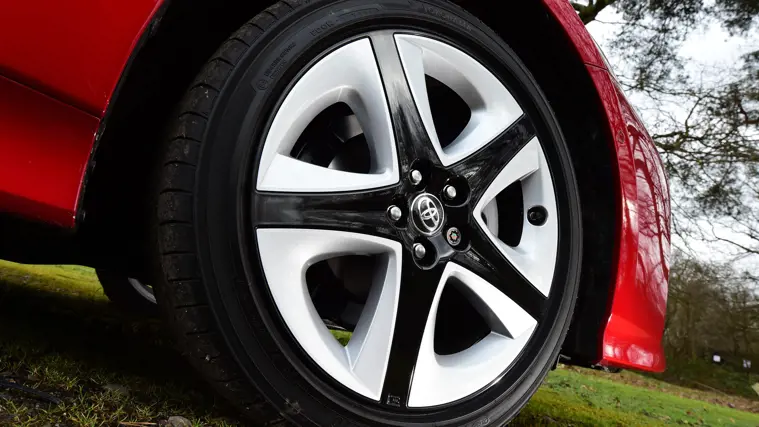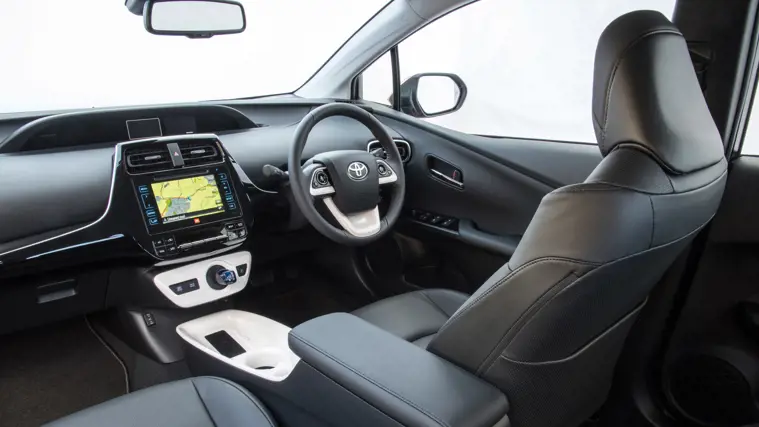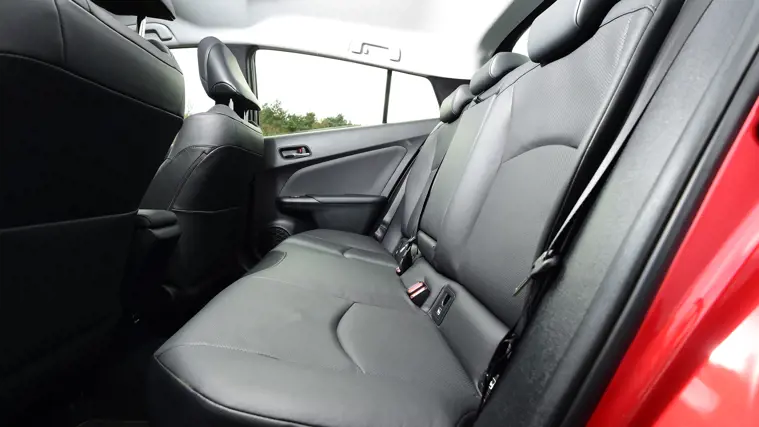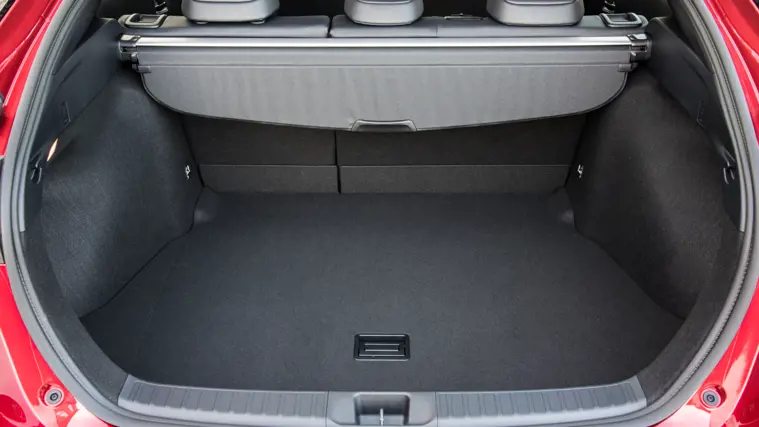Toyota Prius (2016-2022) Review
Frugal on fuel, big on space and comfortable too: the Toyota Prius isn't just for taxi drivers
Strengths & weaknesses
- Excellent urban fuel economy
- Quiet and comfortable
- Reliable
- Less economical on motorways
- Restricted rear headroom
- Leisurely performance
The Prius' runaway popularity amongst taxi drivers shouldn't put you off the car; it's a ringing endorsement of this eco-friendly Toyota
If people who spend their working lives in a car are choosing the Prius, this speaks volumes about its comfort, fuel economy and reliability: it's probably safe to assume that it'll survive as a family car.
The evidence shows that it's true: in the latest Driver Power new car satisfaction survey, the Prius was crowned the best small family car to own. The same survey also ranked the Prius as the third most reliable new car in Britain.
Since 2000, when the Prius first went on sale in Britain as a pioneer of efficient hybrid technology, dozens more hybrid cars have gone on sale. But the latest version of the Prius is still a step ahead of most when it comes to fuel economy.
It still has a petrol engine, plus a battery and electric motor that can recover energy that's normally lost when you use the brakes to slow down. That energy is then used to drive the car at extremely slow speeds for short distances, and to reduce the power required from the engine when you accelerate.
The results are impressively low official fuel economy figures, which also stand up when it comes to real-world driving - particularly in town where regular slowing down and speeding up plays to the hybrid’s strengths. While you’re unlikely to come close to the car’s official fuel economy figure of up to 83.1mpg, more than 70mpg should be possible in town.
However, that’s likely to fall closer to 50mpg on long motorway journeys at steady speeds, where the hybrid brings little fuel economy benefit. A similarly-sized diesel car, such as a Volkswagen Golf, Peugeot 308, Hyundai i30 or Renault Megane would normally be more economical on these type of journeys.
Despite the surrealist styling, the Prius is practical, with an enormous 502-litre boot (457 if you opt for a car with a spare wheel), which is larger than most other family hatchbacks, bar the Skoda Octavia.
There’s enough legroom in the back to squeeze in three adults, but they will be more comfortable if they are short because the sloping roof restricts headroom. Seats are supportive and the interior is feels well put-together, even if the design - with a large display in the centre of the dashboard - isn’t particularly attractive. The touchscreen requires a strong prod of your finger to make some selections, and it’s not as intuitive to use as those from Peugeot and Ford, let alone BMW and Mercedes.
The Prius feels well made but entry-level Active versions use cheaper plastics and feel like a budget option. All cars do have that touchscreen and rear-view camera as standard because the view through the back screen is limited, with blind spots when you are reversing. More expensive models have a better wuality interior. For better visibility, Toyota offers a hybrid version of its C-HR crossover, which uses the same mechanical parts as the Prius but has a higher driving position.
The car is straightforward to drive, though. The combination of electric and petrol power helps it to accelerate smoothly, and it's comfortable on bumpy roads, although it's ability to soak up harsh bumps does mean that it can feel bouncy on rough roads.
It doesn't take kindly to sporty driving. That's down to its gearbox, which is known as a continuously variable transmission - or CVT. it helps to boost fuel economy but gives the car a jerky feel and makes the engine rev unpleasantly hard if you try to accelerate quickly.
If you try to take corners too quickly, it will lean heavily. This is a car that’s best driven smoothly, with gentle pressing on the accelerator and steady steering, which should also deliver the best fuel economy. For a car that feels more agile and energetic, and which remains more stable in corners, you would be better off with a Vauxhall Astra, Ford Focus or even a VW Golf.
The Prius is one of the safest family cars that you can buy. It scored top marks in independent crash testing carried out by Euro NCAP. This was achieved in 2016 under the latest and most stringent standards.
Key facts
| Warranty | Five years / 100,000 miles |
|---|---|
| Boot size | 502 litres |
| Width | 1760mm |
| Length | 4540mm |
| Height | 1470mm |
| Tax | £105 in first years, £140 thereafter / Pre-April 2017 cars: Free |
Best Toyota Prius for...
Best for Economy – Toyota Prius Business Edition
The key to choosing the most economical Toyota Prius is to choose a model with the smallest 15in wheels, which are standard on the cheaper Active and Business Edition cars. Official fuel economy is 94.1mpg (around 70mpg in the real-world, with CO2 emissions of 70g/km bringing low company car tax.
Best for Families – Toyota Prius Business Edition
It costs less than £1,000 more than the cheapest Prius Active, but the Business Edition comes with much more equipment, including keyless entry, heated seats and better-quality plastics. A head-up display and blind spot alert help keep you focused on the road.
Best for Performance – Toyota Prius Business Edition Plus
With the same engine and motor combination in all Toyota Prius models, acceleration and top speed is identical across the range - and it’s not particularly quick. Business Edition Plus cars have larger wheels, which make them look (a little bit) sportier.
One to Avoid – Toyota Prius Active
You might be saving £1,000 over the Prius Business Edition, but it means missing out on a raft of useful equipment, including heated seats, keyless entry, head-up display and a blind spot monitor.
History
- March 2016 Current Toyota Prius goes on sale
- February 2018 Automatic windscreen wipers now standard (apart from Active trim). Also gains a new leather trimmed steering wheel.
Understanding Toyota Prius names
Engine 1.8 VVTi
The size of the Prius’ engine is shown in litres: all cars have a 1.8-litre motor, which uses petrol, as indicated by the letters VVTi.
Trim level Business Edition Plus
A car’s trim level lets you know how much equipment it comes with as standard. The entry-level cars are badged Active, followed by Business Edition, Business Edition Plus and then finally Excel.
Gearbox CVT
You may see a Prius described as a CVT model. This refers to its automatic gearbox - an economical type called a continuously variable transmission (CVT). All Prius cars have this type of gearbox.
Toyota Prius Engines
1.8 VVTi with electric motor
Choosing an engine for the Prius is a simple task, as there’s only one - a petrol engine that works together with the battery pack and motor.
Wheel size affects the car's overall fuel economy figure: cars fitted with the standard 15in wheels have an official fuel economy figure of 83.1mpg, but this drops to 78.4mpg for higher-specification cars with 17in wheels. Carbon dioxide emissions are also affected, but both cars remain in the same company car tax band.
As with all hybrid cars, fuel economy in the real-world can vary considerably, depending on how you drive. The Prius is most efficient in town, where the battery and motor is effective at recovering energy as the car slows down in stop-start traffic, and then using this to accelerate again.
Drive efficiently, by pressing the accelerator gently and slowing down gradually, where possible, and you can expect to get an average of 70mpg in town, whether you have the large or small wheels. On the motorway, however, you’re most likely to see around 50mpg, as the benefits of the hybrid technology aren’t as effective,
The official mpg figures are generated from a mandatory laboratory test that fails to represent modern driving on normal roads, and is particularly misleading when it comes to hybrid cars.
| Fuel | Fuel economy | Power | Acceleration (0-62mph) | Top speed | |
| 1.8 VVTi (15in wheels) | Petrol hybrid | 94.1mpg | 112hp | 10.6sec | 112mph |
| 1.8 VVTi (17in wheels) | Petrol hybrid | 85.6mpg | 112hp | 10.6sec | 112mph |
Toyota Prius Trims
Active, Business Edition, Business Edition Plus, Excel
There are four Toyota Prius trim levels available, each with a different selection of standard equipment. You’re also able to select several individual options to personalise your Prius, no matter which version you buy.
All cars include some key safety equipment, which helped the Prius to get full marks in Euro NCAP tests. This includes automatic emergency braking that can stop the car to prevent a crash and lane departure alert, which sounds a warning if the car drifts out of its lane.
The cheapest Prius is the Active version, which is well-equipped with a long list of standard features. These include a reversing camera, dual-zone air conditioning, bright LED headlights and adaptive cruise control, allowing the Prius to maintain a set distance from the car in front on motorways.
The car has a two-level digital display, with one long and narrow screen on top of the dashboard, displaying the Prius’ speed and efficiency information. A second one sits below, in the middle of the dashboard, controlling the digital radio and phone functions. Its software looks dated, with a menu system that seems to be ten years old, but is fairly simple to use, with Bluetooth for connecting a phone wirelessly. Voice control is standard but can be hit-and-miss.
For a cost of less than £1,000 - before any Toyota Prius discounts - upgrading to the Prius Business Edition represents good value, with the addition of heated front seats, automatic windscreen wipers (from 2108) and keyless entry for both front doors and the boot.
Softer plastics on the top of the dashboard make the car seem more expensive, as does a leather steering wheel and head-up display that projects the car’s speed onto the windscreen so you don’t need to look down and take your eyes off the road. It also includes a wireless phone charger for compatible phones and a blind spot monitor that will warn you if you’re about to pull out in front of another car, or reverse into crossing traffic.
Business Edition Plus brings larger 17in alloy wheels, which increases the car’s official fuel consumption and CO2 emissions figures, so you can opt to retain the 15in wheels.
The upgrade also brings parking sensors at the front and back of the Prius, which are less useful than usual because of the standard rear parking camera. Sat-nav is included too.
At the top of the range, the Prius Excel comes with leather seats, an upgraded JBL stereo, plus voice recognition for sat-nav directions, music and handsfree phone calls. Again, you have the option of having 15in wheels instead of the 17in ones that comes as standard.
Toyota Prius Reliability and warranty
You might think that adding a battery and motor to a petrol car makes it more complicated and more reliable. However, Toyota’s hybrid system has proved itself over more than a decade
The previous model is one of the 25 most reliable cars in Britain, according to the Reliability Index produced by Warranty Direct, an aftermarket warranty company, which bases its results in its own reliability claims data.
This year’s 2018 Auto Express Driver power customer satisfaction survey ranks the latest Prius third out of 75 new cars for reliability, which is a reassuring result backed up by a five-year warranty from new, which is restricted to the car’s first 100,000 miles, if that arrives sooner.
Used Toyota Prius
The popularity of the Prius helps to keep the price of used cars relatively high, so there are few cut-price bargains available. That means that you’re likely to need to spend from £20,000 for a second-hand model, with representative finance payments from around £275 a month.
There have been very few changes to the current generation of the car since it arrived in 2016 - unless automatic windscreen wipers, which switch on when it rains, are essential to your purchase. If that's the case then opt for a recent 2018 model, as that's when the wipers became standard on all but the entry-level Active cars. Previously they had only been standard on Excel versions.
Older vehicles sold up to 2017 may have higher official fuel economy figures than more recent models. This is mainly due to a change the way in which these figures are calculated; there shouldn't be a difference in efficiency between the cars in real-world driving.

